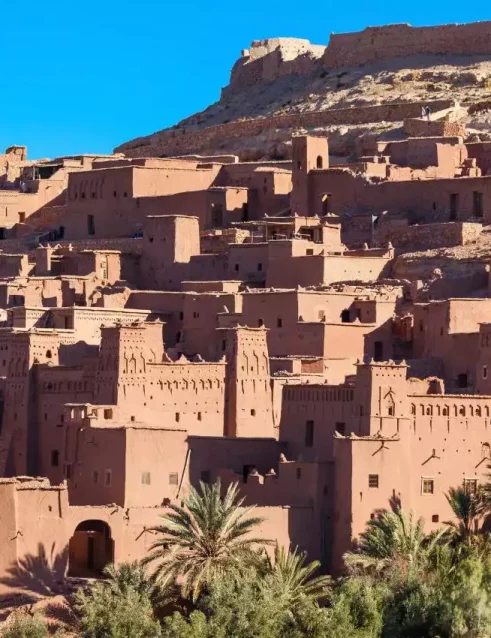Rabat, City of Lights

You wish to be at the perfect place to start exploring Morocco, Rabat is the answer. As the capital of Morocco, you will discover a city that artfully mixes tradition and modernity.
A pleasant climate throughout the year, a privileged location on the Atlantic seaside, and a history of exceptional wealth make Rabat-Salé a leading tourist destination. Its coastline is nearly 60 km long, with rocky creeks or fine sand beaches, and its countryside offers an ecological diversity for ideal hiking. In terms of culture and history, it benefits from a unique heritage, reflecting the diversity of legacies that have shaped, over the centuries, the two banks of Bouregreg (Rabat & Salé).
The city was founded in 1150 by the Kalif Almohad Yacoub el-Mansour. It becomes the capital of the Kingdom in 1912 instead of Fez under the French protectorate. Rabat with 580 000 inhabitants, is the big political and administrative center of the country where are located the Royal Palace, the governmental authorities, and the embassies. Designated as “City of Light, Cultural Capital of the Kingdom”, it was rightly included in the universal heritage of humanity by UNESCO in 2012. This choice was motivated by the historical advantages of the city namely the quality of its site, its urbanism, and the beauty of its architectural structures. All of this is the result of a fruitful dialogue between the Arab-Muslim past and Western modernism.
It is a city resolutely modern which knew how to preserve its authentic side, it combines in the same elegance its historical heart and its modern city. The many buildings that the city contains are as many testimonies of its history that dates back to antiquity and have been accumulated over the centuries. In addition to its status as the administrative capital, Rabat is also the county town of the Rabat-Salé-Kenitra Region.
In addition, the capital is also a city that breathes easy: 20 m² of green space per inhabitant, which is double what is recommended by the World Health Organization.
The Medina – the Andalusian City:
With the Almohade Dynasty (XII Century) the Rabat site is going to start a continuous extraordinary historical journey full of radiance and activity. This, however, did not prevent the city from going through a phase decline, as of 1253, with the advent of the dynasty of Almoravids who had chosen the city of Fez for a capital. In 1609, the Moriscos who were chased away from Spain during the Reconquista started arriving massively in Rabat, which gave the City a new lease of life. The new comers occupied the present location of the Medina which they endowed with a new enclosure they would henceforth call «the Andalusian Wall », and which took the name of the new Sala (Salé) .. In 1912, Rabat became the Capital City of the Kingdom of Morocco, and Marshal Lyautey, the first Resident General, made of it the administrative and political capital of the Protectorate. With the architect and urbanist Henri Prost, the two men performed most of the new part of the city (ville nouvelle) both within and without the Yaacoub El Mansour confines in the Medina continuum.

The Royal Palace:
The construction of the royal palace of Rabat began in the middle of the 19th century on the ruins of an ancient palace. Also called Dar El Makhzen, majestic and protective, the building is a fine example of Moroccan Art. Surrounded by an enclosure, its main entrance overlooks a vast esplanade, the Mechouar, is used for the outdoors royal ceremonies.
It is an architectural complex surrounded by a particular enclosure. It consists of the government city including a mosque, barracks for the guard, a royal college, a small racetrack and various ministerial buildings.
The buildings are all topped with green tiled roofs, structured according to the model of the traditional town house; they are oriented towards vast gardens and very ornate courtyards.
It is not accessible to the general public anymore, but the beauty of this palace is one of a kind!
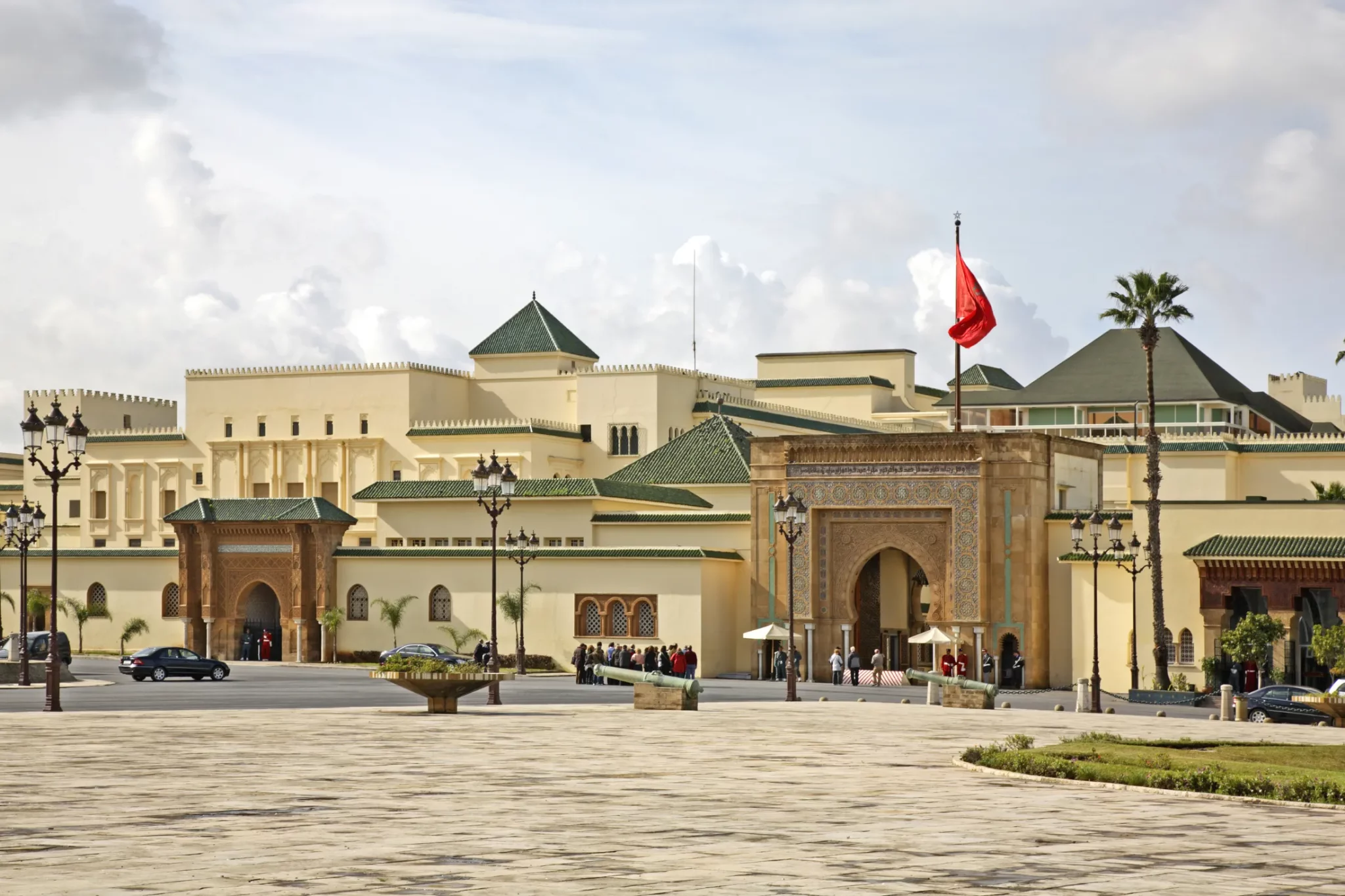
Mohammed V Mausoleum:
Right in front of the Hassan Tower stands the mausoleum Mohammed V, a monument of unparalleled beauty. Its construction began in 1962 and ended in 1971.
This monument is dedicated to the memory of the late monarch Mohammed V, beloved by the people who have always considered the symbol of the Liberation of the Nation. In the mausoleum one can also see the tomb of his successor, Fire Hassan II and that of his second son, the late Prince Moulay Abdallah. The visit of this monument is a great opportunity to appreciate the true value of traditional Moroccan Art. Outside, a magnificent white marble pavilion crowned with green tiles. Inside, the walls completely covered with “zellige”, the ceiling with its motifs and sculptures on plaster and wood extremely refined demonstrate the ingenuity and know-how of the Moroccan master craftsmen.
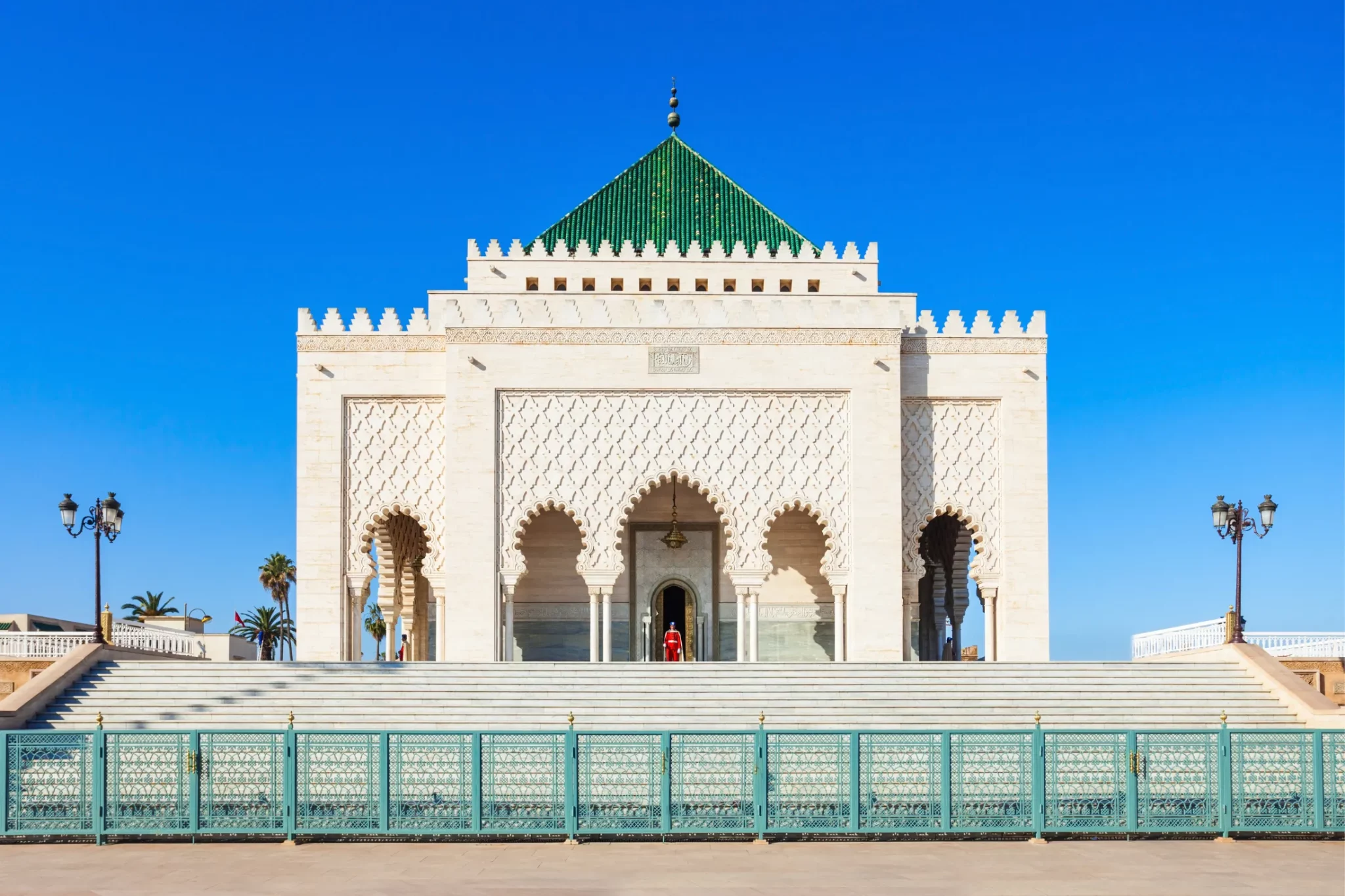
Kasbah of the Oudayas:
Within a fifteen-minute walk from the Rabat City Center stands the Kasbah of the Oudayas at the Bou Regreg estuary, a real fortress dating back to the XII century. With its monumental Almohade portal, the Kasbah is a gripping site which offers the visitor a never seen before beauty that encompasses the Andalusian style garden, a museum, some riyads and some mosques. The Andalusian influence is omnipresent with the uniformly lime covered walls, the dominant blue colored doors and the wrought iron windows … Inscribed on the World Heritage list by UNESCO, the Kasbah of the Oudayas has become for a good number of both Moroccan and world artists a haven of peace and inspiration. Visitors are seduced by the site’s beauty, just as they are by its soothing calm. Doubtless, the Kasbah’s greatest attraction remains the famous Moorish Café which can be acceded to through the winding streets. The café is a place not to be missed where a mint tea can be enjoyed along with some tasty almond sweets. With the awesome ocean view it offers at the Bou Regreg estuary, the Casbah remains a highly recommended space for relaxation where rowing boats can be seen moving to and fro between the two river banks.
Oudayas’ Gardens:
The Hispano-Moorish style Garden, was created in the 1920s by Tranchant De Lunel, Lyautey’s favorite architect, who completely redesigned it and made it what it is today. It is located at the foot of the palace of the Kasbah of Oudayas, former home of the Alawite sultans during their stay in Rabat. Here reigns an atmosphere of beneficial tranquility. Renovated in 2004, this garden, originally of Andalusian style, is increasingly transforming into a French garden, and is the typical example of the riyad we find in Morocco. Here you will find all kinds of flowers and fruit trees: laurel roses, orange trees, banana trees, lemon trees, and datura.
The Chellah:
Built in the XIV Century by the Merinid dynasty upon the ruin of the ancient Roman city of Sala Colonia, the Chellah necropolis is located at a distance of two kilometers from the city center, off the Almohad enclosure. According to historians and archeologists, the Chellah site was undoubtedly the most ancient human agglomeration ever set on the estuary of the Bouregreg River. For proof, one can allude to the numerous trading posts founded by the Phoenicians and Carthaginians. Standing on a hilltop that overlooks the river, the Chellah necropolis is a magical space surrounded by a thousand mysteries. Hardly does the visitor walk through the Merinid portal of the city of Chellah, with its octagonal shape, when it immediately plunges you into a fairyland where the traces and remnants of the Roman and Merinid empires marvelously mix with each other. A long and pleasant paved road, lined with various trees and odorous flowers meets the visitor. Adorned with polychrome earthenware mosaic, the minaret of the old mosque overlooks the site. Not far from this site lies a pool was strewn with coins, where fish, turtles, and eels are peacefully swimming.
Below the koubbas, the tombs of the saints, you will spontaneously head towards the eel pond, which is supposed to ensure fertility for women. According to the legend, the basin would be fed by a miraculous source, the source of the Cannons, where a fish covered with golden scales would live.
The eels are said to have the power to cure sterility. As offerings, young women in need of children must throw eggshells, symbols of fertility, but the basin is in fact littered with coins that nobody touches! Eels are rare, but fish and turtles abound, not to mention the cats that pious imams protect.
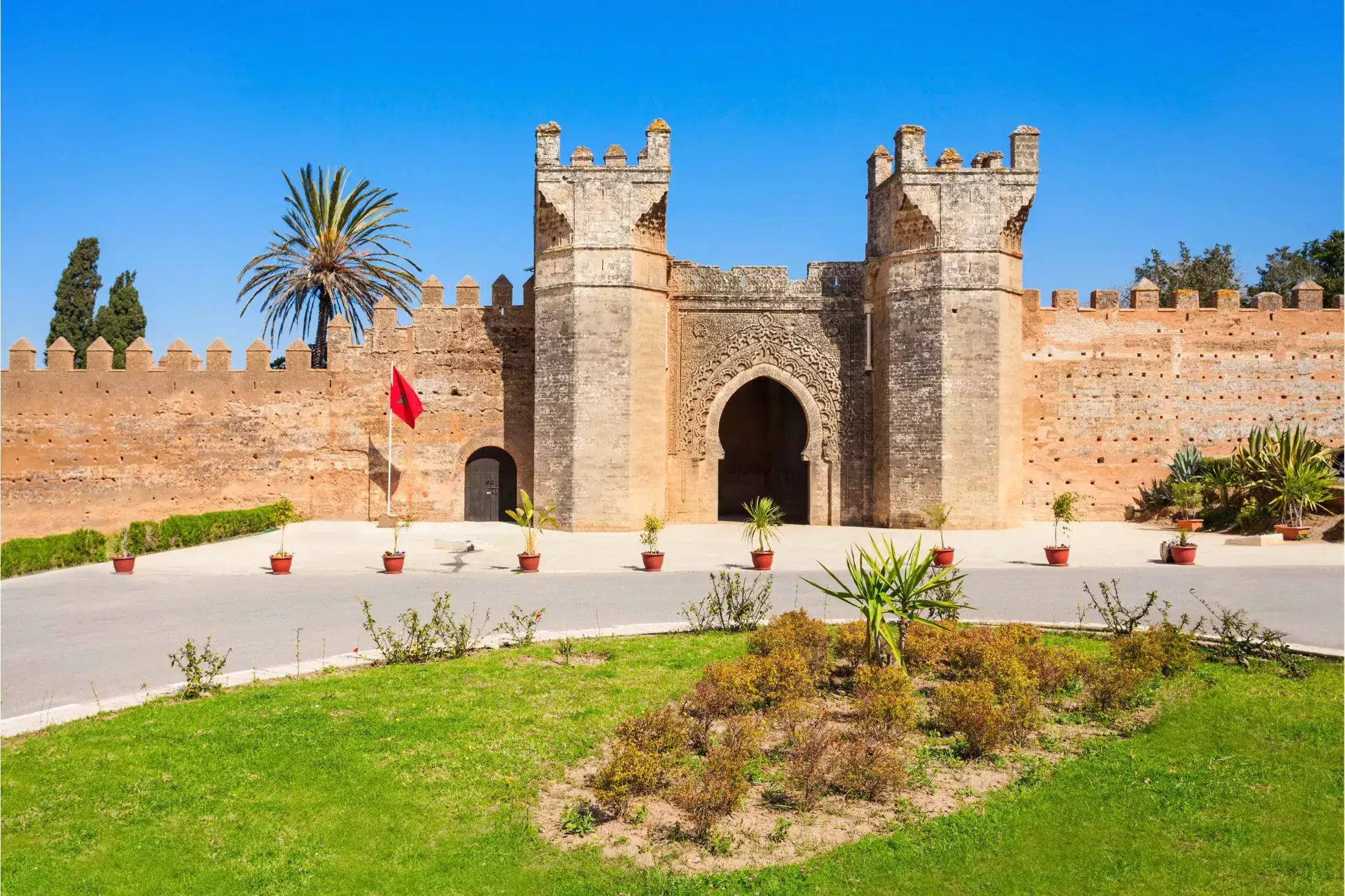
Mohammed VI Museum:
Inaugurated on 7 October 2014, the Mohammed VI Museum of Modern and Contemporary Art is the first museum institution in the kingdom to devote itself entirely to modern and contemporary arts. This museum is also the first Moroccan public institution to meet international museographical standards. The MVIM aims to cover the evolution of Moroccan artistic creation in plastic and visual arts, from the early 20th century to date.
Bank Al Maghrib Museum:
Bank Al Maghrib Museum houses a large collection numismatic collection which reflects several centuries of the Kingdom’s history. With over 30 000 currency items, objects, monetary instruments and bank notes, the numismatic collection recounts in a chronological order the money and bank note history from antiquity till today. The art gallery permanently exhibits a rich collection of 800 art works. From the first Orientalist representations of Morocco to Moroccan paintings in its different components, the Bank Al Maghrib pays tribute to the intersecting views of both Moroccan and Foreign art masters.
Leisure activities in Rabat:
Royal Golf Dar Essalam:
Golf has existed in the Kingdom since the beginning of the 20th century, but it is under the will of King Hassan II, a true enthusiast, that it takes on its full scope. In the space of one reign, he made this noble sport a true Moroccan tradition. In 1971, His Majesty King Hassan II gave the capital of Morocco an adequate sports complex dedicated to golf, an ambitious project with meticulous details, technical qualities, well thought-out structures and an elegant atmosphere. The Golf of Dar Es Salam thus becomes the heart of the national golf. In the tradition of the late king, it is today His Majesty Mohammed VI who takes over and shows his will to promote this sport. Mission entrusted to his Royal Highness Prince Moulay Rachid, known for his commitment and efforts invested in the development of golf in Morocco.
The Royal Golf Dar Essalam is already a legend for golf amateurs since it is the place where, the prestigious Hassan II Trophy took place. Inaugurated in 1971 and designed by Robert Trent Jones Senior, it is a very stately course with splendid fairways ensconced in eucalyptus, palm trees, hyacinths, narcissus, mimosas, papyrus and Roman columns. Designed by Robert Trent Jones, the Dar Es Salam Royal Golf Club is located about fifteen minutes from the center of Rabat, the capital of the Kingdom of Morocco. Its grounds cover 440 hectares of trees, flowers, water and courses appreciated by true connoisseurs. Ideally located in the heart of a forest of cork oaks, the Royal Golf Dar Es Salam is a marvel of its kind: technicality, quality of the courses, greens and beauty of a sublimated landscape…
Golfers and aesthetes will undeniably find in this place the magic of the most beautiful golf courses and the serenity of the most fabulous domains. To play, to relax, to train, to win, is the privilege of true epicureans.
With 3 different courses and 45 holes, the Royal Golf Essalam is a pure beauty:
The red course, one of the most beautiful courses in the world, is designed for professionals. It extends its 18 demanding holes, Par 73, over 6702 meters. Amateurs will find it one of the most challenging courses in their lives.
The blue course, 18 holes, Par 72 of 6205 meters, very entertaining, technical with fast, undulating greens and moving fairways. It is a real course redesigned to be played every day.
The green course is much more entertaining. It is designed for a short game and offers 9 holes, Par 32, of 2170 meters. The nature is very generous and the design of the holes offers a great variety to arrive on its splendid greens, original and almost unique.
For more information or if you would like to play, please contact the Golf directly, a green fee is to be paid depending on the courses you would like to try out.
Website: Dar Essalam Royal Golf / Tel : +212 537 755 864
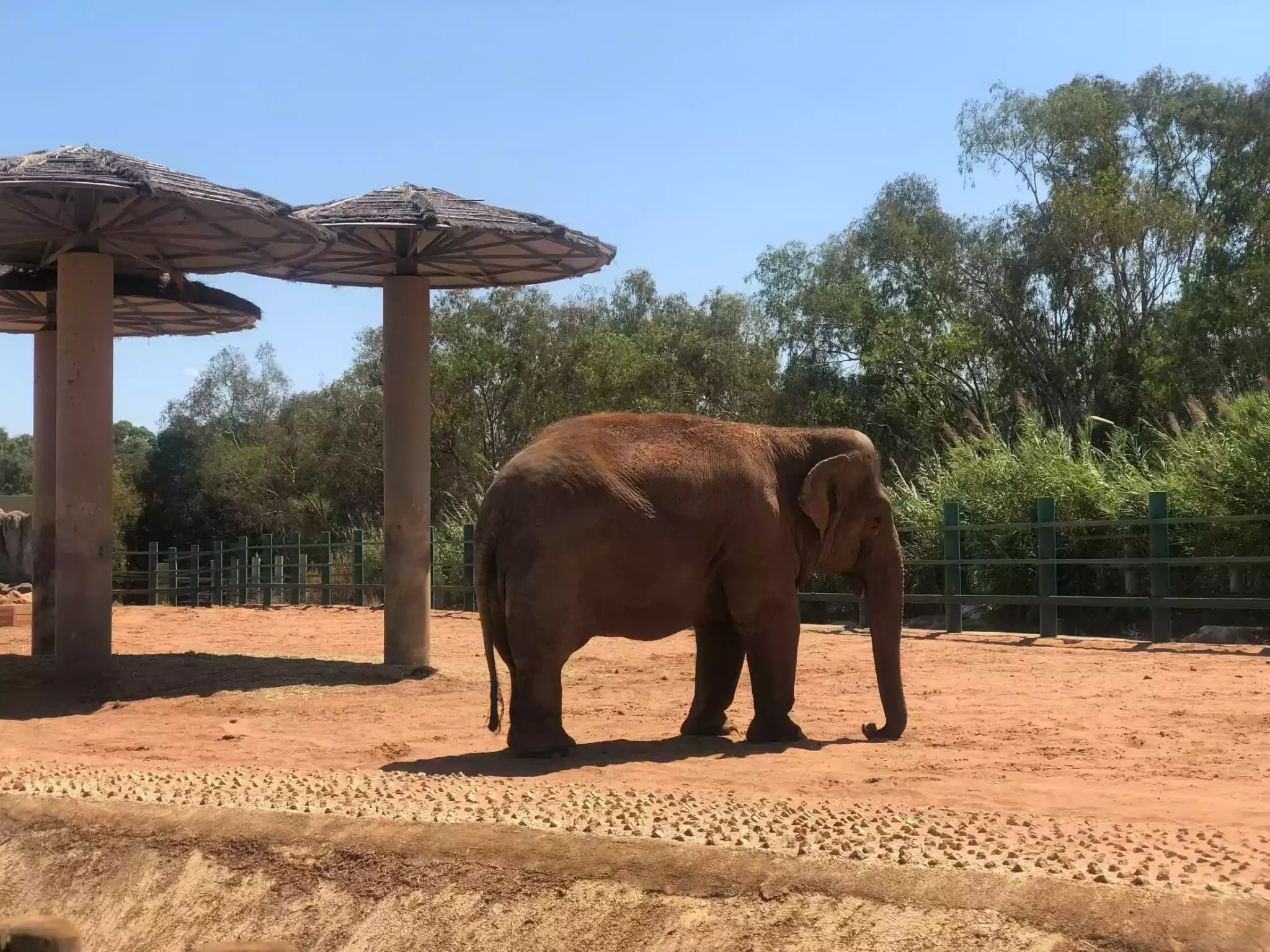
The Zoo of Rabat:
Recently renovated, the new zoo, called the “wild encounter”, has been created with a view to reproducing the emblematic ecosystems of Morocco and Africa: swamp, rainforest, Savannah, desert and Atlas Mountain. The zoo was developed into an open space that immerses the visitor in an atmosphere of discovery and adventure. Rabat Zoo is specialized in Moroccan, Saharan and African fauna; this offers an opportunity to highlight the specificities of the Moroccan fauna and flora, which are often endemic, and those of the African continent. The design and layout are based on an open concept, presenting the animals in an interactive way in their natural habitats, putting the visitor in an atmosphere of adventure and discovery.
Under the label “the wild encounter”, the Rabat Zoological Garden specializes in Moroccan, Saharan and African fauna, exhibiting about 2000 animals representing 190 animal species.
Five African ecosystems are reproduced in the image of the original habitats of these animals:
- The Savannah
- The Atlas Mountains
- The Desert
- The Wetlands
- The Tropical Forest
MISSION
The mission of the Rabat Zoological Garden is to preserve the well-being of animals, conservation, scientific research, environmental education and entertainment.
CONSERVATION
The conservation and protection of animals and the ecosystems in which they live, as well as contributing to the safeguarding of the rarest or most endangered species of fauna.
EDUCATION
Aware of the need for environmental awareness and education, the Rabat Zoological Garden creates, for its young visitors, activities that allow them to discover the fauna and flora of their region in order to make them aware of their environment and acquire the knowledge and values necessary to be able to act and be sensitive to present and future ecological problems.
SCIENTIFIC RESEARCH
Scientific research and the enrichment of knowledge about different species, particularly on the biological, physiological, behavioral and health levels.
The zoo regularly opens its doors to students of the Veterinary Institute, high school students and doctoral students wishing to study and specialize in wildlife.
ENTERTAINMENT
The Rabat Zoological Garden offers a variety of outdoor recreational and educational activities, relaxation areas in nature and quality catering services.
For more information, please visit Rabat Zoo’s Website.









